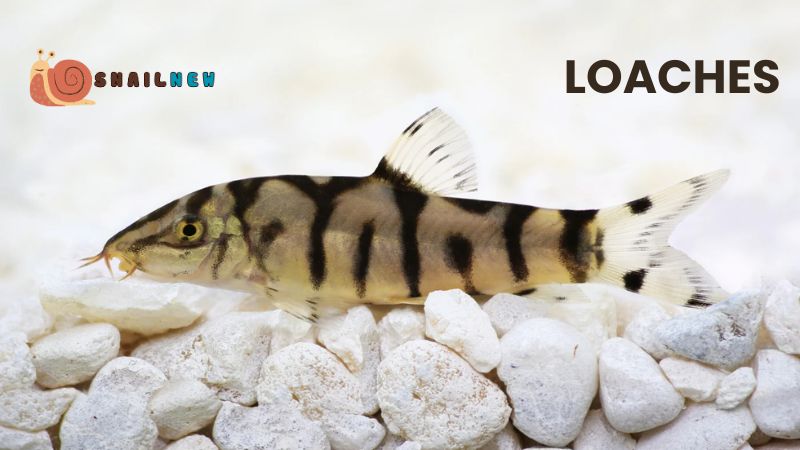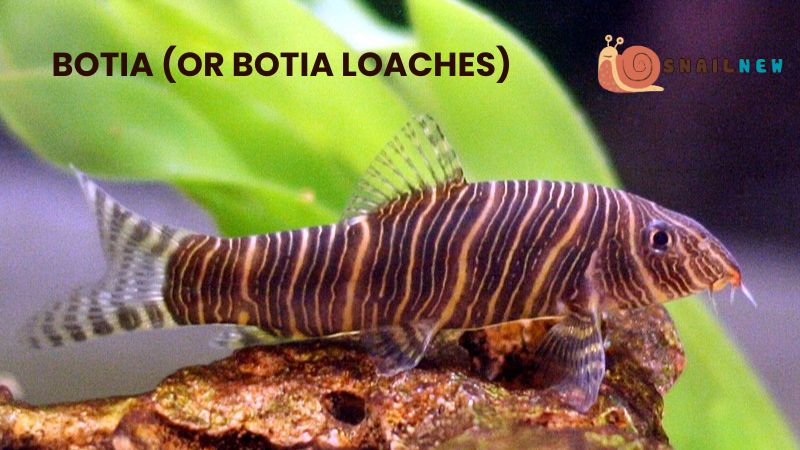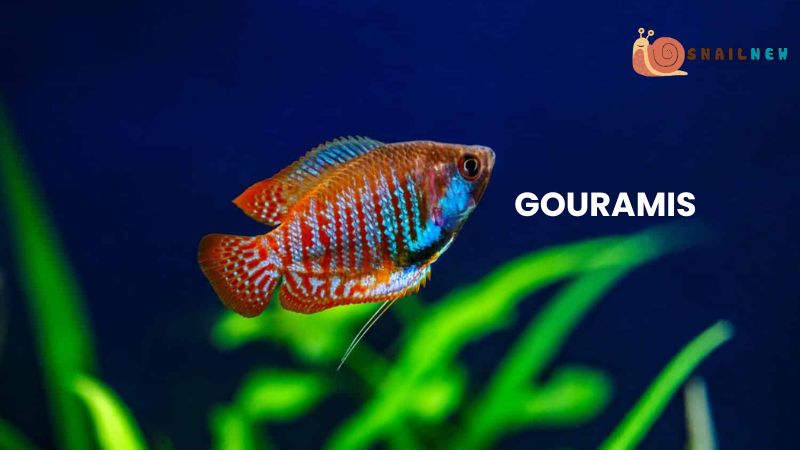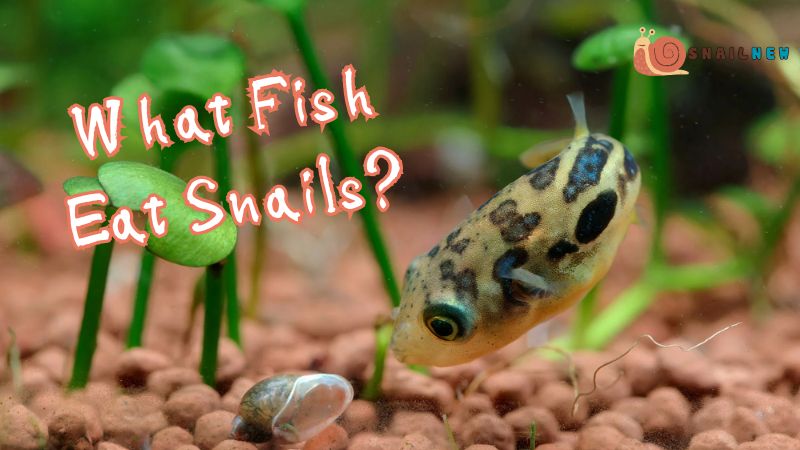In the tranquil confines of aquariums, a seemingly innocuous menace can emerge: the relentless proliferation of snails. These diminutive creatures, while often considered benign, possess a remarkable ability to reproduce rapidly, transforming a once serene aquatic haven into a realm overrun by snail populations. Yet, amidst this challenge lies a natural solution: fish that exhibit a penchant for consuming snails.
“What fish eat snails?” by Snailnew that reverberates throughout the aquarium community, echoing the shared struggle against invasive snail populations. Fortunately, numerous fish species have evolved to include snails within their dietary preferences, serving as invaluable allies in the perpetual battle against these aquatic pests.
Table of Contents
ToggleWhat Fish Eat Snails?
1. Loaches:
Loaches, a diverse group of bottom-dwelling fish, serve as stalwart guardians against snail infestations with their insatiable appetite for these shelled creatures. Leading the charge are renowned species like the clown loach and yo-yo loach, tirelessly scouring the substrate in pursuit of their prey. Their relentless foraging behavior not only underscores their efficiency but also highlights their indispensable role in keeping snail populations in check. With their voracious appetite and unwavering dedication, loaches stand as essential assets in the ongoing battle against snail infestations.

2. Pufferfish:
With their captivating charm and charisma, pufferfish transcend their roles as mere aquarium inhabitants to emerge as proficient hunters in the war against snails. Adorned with specialized dentition designed to pulverize even the most resilient snail shells, pufferfish, such as the freshwater dwarf pufferfish, stand as formidable adversaries against burgeoning snail populations. Their unique abilities not only showcase their prowess but also underscore their significance in maintaining ecological balance within aquatic environments. As natural predators, pufferfish contribute significantly to controlling snail populations, making them invaluable assets in aquarium maintenance and beyond.
3. Botia (or Botia loaches):
Among the esteemed warriors combating snail infestations, Botia loaches stand out as a subgroup distinguished by their fervent pursuit of snail prey. Notable species like the zebra loach and skunk loach exhibit unwavering dedication in their quest to eradicate snail populations, patrolling tank bottoms with relentless determination. With their distinctive markings and tireless foraging behavior, Botia loaches not only contribute to the maintenance of aquarium ecosystems but also showcase the diversity and resilience of nature’s defenders in the ongoing battle against snail proliferation.

4. Assassin Snails:
Despite their non-piscine nature, assassin snails merit recognition for their pivotal role in regulating snail populations. These stealthy predators infiltrate snail communities with precision, methodically hunting down individuals and effectively curbing their numbers. By doing so, assassin snails play a crucial role in maintaining the delicate equilibrium of the aquarium ecosystem. Their efficient predation not only helps prevent snail overpopulation but also underscores the intricate balance of nature within aquatic environments.
5. Cichlids:
Revered for their vibrant hues and diverse behaviors, certain species of cichlids also partake in the consumption of snails, further bolstering the arsenal of snail control mechanisms in aquariums. African cichlids, in particular, exhibit a penchant for snail predation, exemplifying the multifaceted nature of their ecological contributions.
6. Gouramis:
Completing the ensemble of snail-eating piscine allies are the gouramis, renowned for their graceful demeanor and captivating presence. Species such as the paradise fish demonstrate a proclivity for snail hunting, enriching the tapestry of aquatic biodiversity within aquarium ecosystems.

What fish eat snails? underscores the critical importance of understanding and addressing the dynamics of snail populations within aquariums. While snails serve as integral components of the aquatic ecosystem, their unchecked proliferation can disrupt the delicate balance within enclosed environments. In such instances, the introduction of snail-consuming fish emerges as a viable solution, offering a natural means of population control.
However, the integration of snail-eating fish into aquarium ecosystems necessitates judicious consideration. Compatibility with existing tank inhabitants, as well as the overall size and configuration of the aquarium, must be meticulously evaluated to mitigate potential disruptions to ecosystem dynamics. Moreover, while fish offer a natural method of snail population management, reliance solely on piscine predators may engender unforeseen imbalances within the ecosystem, underscoring the importance of employing complementary control measures.
Before resorting to piscine solutions, alternative methods of snail control warrant exploration. Manual removal, adjustment of tank conditions, and the introduction of natural predators such as assassin snails represent viable strategies for managing snail populations while preserving the integrity of the aquarium ecosystem.
Sum Up
In conclusion, the persistent inquiry, “What fish eat snails?” serves as a poignant reminder of the intricate interplay between organisms within aquatic environments. Snails, though often perceived as pests, occupy a crucial niche within the ecosystem, and their management demands a nuanced approach. Fish species exhibiting snail predation behaviors offer a valuable tool in the arsenal of aquarium enthusiasts, yet their introduction necessitates careful deliberation to ensure the long-term health and equilibrium of the aquatic environment. By embracing a holistic approach to snail population management, aquarium enthusiasts can cultivate thriving aquatic ecosystems that flourish in harmony with nature.
Related Posts:
- What Does Assassin Snail Eat? Unveiling the Palate…
- What Do Aquarium Snails Eat? A Comprehensive Guide…
- Exploring the Aquatic Appetite: Do Goldfish Eat Snails?
- Exploring the Benefits of Malaysian Trumpet Snails…
- A Comprehensive Guide to Food for Snails Aquarium
- Can Snails Reproduce Asexually? Nature's Ingenious…


